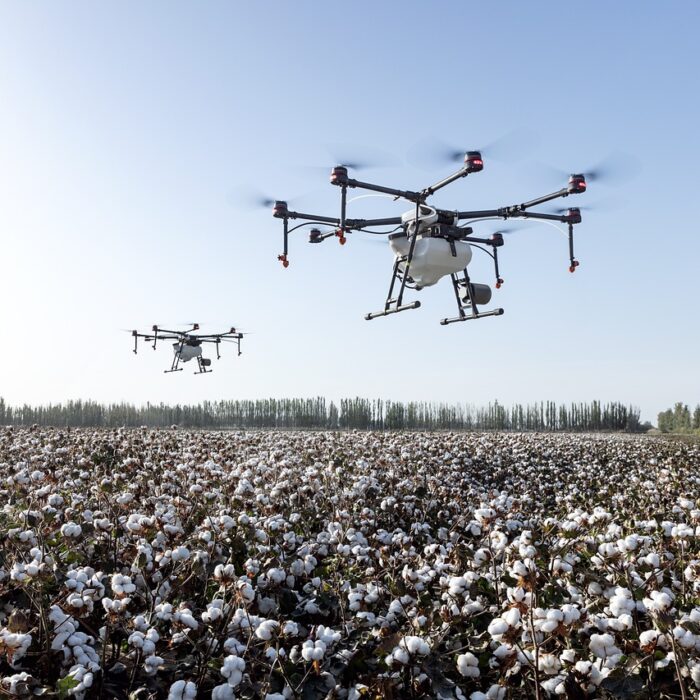The rise of drones has revolutionized countless industries, from aerial photography to search and rescue. However, alongside these advancements comes the responsibility to operate safely and comply with Federal Aviation Administration (FAA) regulations. Not all drone flights require the same permissions. Depending on how you plan to use your drone, you might need to register it with the FAA and potentially obtain a license.
Types of Drone Operations and FAA Requirements
- Recreational Flyers: Drones under 250 grams typically only need to be registered with the FAA.
- Commercial Operations: More complex operations, like flying commercially, may require a Part 107 certification. This involves passing a knowledge test and following specific safety regulations.
This article explores the concept of drone risk management for commercial UAV operations and delves into the development of Operational Risk Assessments (ORAs).
The Landscape of Drone Risk and FAA Regulations
Drones, despite their compact size, pose a variety of potential hazards, including:
- Mid-air Collisions: The increasing number of drones in airspace necessitates robust risk mitigation strategies to prevent accidents with manned aircraft or other UAVs. Adhering to FAA regulations like maintaining visual line of sight (LOS) for most operations under Part 107 is crucial (14 CFR Part 107.31).
- Loss of Control: Technical malfunctions or pilot error can lead to a loss of control, potentially resulting in property damage or injuries. The FAA requires drone pilots to pass an aeronautical knowledge test to demonstrate competency in safe flight operations (14 CFR Part 107.63).
- Privacy Concerns: Drones equipped with cameras raise privacy issues, requiring careful consideration of flight paths and data collection practices. The FAA does not regulate privacy concerns directly, but operators should be aware of state and local privacy laws. Many Aviation General Liability Insurance Policies exclude coverage for personal and advertising injury claims, such as invasion of privacy.
- Security Threats: Malicious actors could potentially use drones for unauthorized surveillance or even disruptive activities. The FAA has established airspace restrictions around sensitive locations to mitigate this risk (14 CFR Part 45).
Why ORAs Matter: Demonstrating Safety and Compliance
An Operational Risk Assessment (ORA) serves as a roadmap for identifying, analyzing, and mitigating the risks associated with a specific drone operation. By conducting a thorough ORA,
drone operators can proactively address potential problems, demonstrate their commitment to responsible flight practices, and potentially satisfy requirements for obtaining a Federal Aviation Administration (FAA) waiver. A certificate of waiver (14 CFR Part 107.205) may authorize a deviation from certain regulations, including:
- Section 107.25 – Operation from a moving vehicle or aircraft.
- Section 107.29 – Anti-collision light required for operations at night and during periods of civil twilight.
- Section 107.31 – Visual line of sight aircraft operation.
- Section 107.33 – Visual observer.
- Section 107.35 – Operation of multiple small unmanned aircraft systems.
- Section 107.37(a) – Yielding the right of way.
- Section 107.39 – Operation over people.
- Section 107.41 – Operation in certain airspace.
- Section 107.51 – Operating limitations for small unmanned aircraft.
- Section 107.145 – Operations over moving vehicles.
Building a Robust ORA for FAA Compliance
The process of building an ORA typically involves several key steps, aligned with best practices outlined by the SORA (Specific Operation Risk Assessment) process:
- Defining the Operational Context: This initial stage clarifies the purpose and parameters of the drone flight in accordance with FAA regulations. Factors like flight path, mission objectives, payload type, and adherence to airspace restrictions all play a role in risk assessment.
- Risk Identification: This stage involves brainstorming all potential hazards that could arise during the operation, considering factors like weather conditions, human error, technical malfunctions, and potential violations of FAA regulations like exceeding the authorized flight altitude (14 CFR Part 107.51).
- Risk Analysis: Each identified risk is then evaluated based on its likelihood of occurring and the severity of its potential consequences. A risk matrix is often used to categorize risks based on these two factors.
- Risk Mitigation: Once risks are analyzed, a plan is developed to address them in accordance with FAA regulations. Mitigation strategies can involve technical solutions (like geofencing to prevent airspace violations), operational procedures (maintaining a visual observer for Beyond Visual Line of Sight operations requiring a waiver), pilot training, or a combination of these approaches.
- Documentation: The entire ORA process, including findings and mitigation plans, is documented for future reference and to demonstrate compliance with FAA regulations, especially when applying for a waiver.
Best Practices for Effective ORAs and FAA Compliance
Here are some additional tips for crafting a comprehensive ORA that supports FAA compliance:
- Seek Expert Guidance: Consulting with experienced drone professionals or risk management specialists like Henriott can provide valuable insights and ensure best practices are followed.
- Stay Current with FAA Regulations: Drone regulations are constantly evolving. It’s crucial to stay up to date on the latest rules and requirements in your jurisdiction, such as those outlined in Part 107 of the Federal Aviation Regulations (14 CFR Part 107), to ensure your ORA reflects current standards and supports a compliant operation.
- Embrace a Continuous Improvement Mindset: The drone landscape is dynamic, and FAA regulations may change. Regularly review your ORAs and update them as necessary to reflect changes in technology, regulations, or operational procedures.
- Leverage Your ORA with Your Aviation Insurance Underwriter: Demonstrate the safety of your operations and differentiate yourself as a favorable aviation risk to insure.
Conclusion
By adopting a proactive approach to drone risk management through the use of ORAs, operators can ensure the safe integration of UAVs into the airspace while complying with FAA regulations. This not only protects people and property but also fosters public trust and paves the way for continued innovation in the exciting world of drone technology.
Companion Infographic – A Dozen Common UAV Safety Hazards
- Collision with manned or unmanned aircraft, buildings, or power lines
- Data security risks
- Environmental concerns (e.g., disturbing wildlife)
- Existence of corrosion
- Loss of control
- Loss of transmission
- Partial failure or loss of navigation systems
- Pilot unfamiliar with equipment or flight area
- Rapid loss of altitude
- Rotor failures
- Severe weather or climatic events
- Take-off and landing incidents such as undershooting or overrunning
For more information about Henriott Group, visit www.henriott.com. For more information about Harpenau Insurance, visit www.harpenauinsurance.com.
About Henriott Group
Henriott is an independent Risk Management firm dedicated to helping clients prevent, manage, and recover from critical incidents. Working in both public and private entities through effective risk management, risk financing, commercial insurance, employee benefits, crisis management, contingency planning, and crisis response.
CONTACT
Grace Pritchett, Communications (765) 838-8610 | gpritchett@henriott.com
Zach Finn, Director of Risk Management (765) 429-50001 | zfinn@henriott.com




